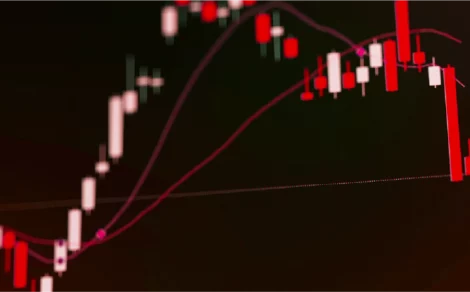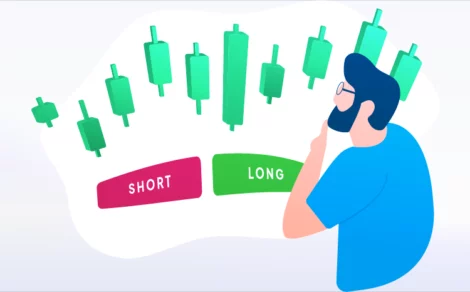Trend trading is a popular strategy used by traders to capitalise on market movements by identifying and following prevailing trends. This approach helps traders make informed decisions based on price momentum, whether in stocks, forex, commodities, or cryptocurrencies. Therefore, understanding how trends form, will help traders to improvise their trading strategies for better profitability.
In this guide, we will explore the fundamentals, benefits, and key techniques of trend trading. So, continue reading to find out how you can successfully use trend trading techniques!
Understanding Trend Trading
Trend trading is a strategy that requires following and identifying the market direction over a given time frame. In this strategy, traders use technical indicators like moving averages, trendlines, and momentum oscillators to analyse price trends.
The core principle of trend trading is simple: buy when the market is trending upwards and sell when it is trending downwards, maximising potential gains by staying in the trend until clear reversal signals appear.
In contrast to day trading, trend trading targets longer-term trends and is suitable for traders aiming for long-term gains. So, with trend patterns and market signals, traders can make better-informed decisions and improve their overall profit from trading.
Process of How Trend Trading Works
Trend trading involves recognising and tracking market direction to profit from price action in the long term. So, traders use technical indicators such as moving averages, trendlines, and momentum indicators to know the market direction. An uptrend indicates increasing prices, a downtrend indicates decreasing prices and a sideways trend indicates range-bound prices.
It starts with identifying a trend, followed by its verification using indicators like the Relative Strength Index (RSI) or Moving Average Convergence Divergence (MACD). A position is entered in the direction of the trend after verification. Then, stop-loss and take-profit levels are determined to control risk.
Successful trend traders keep their positions open until they see reversal signs, maximising their profits while limiting losses. As opposed to day trading or scalping, trend trading is about long-term profit and not short-term fluctuations. Therefore, by following well-established strategies and proper risk management, traders can improve profitability and make better decisions in financial markets.
Advantages of Trend Trading
Many traders prefer this type of trading because of its high profitability chances. Here are the additional advantages of trend trading for a financial trader:
1. Profit Potential
One of the most essential benefits of trend trading is the ability to gain significant profits by riding powerful trends. Some trends persist for weeks, months, or even years, enabling traders to profit from long-term price movements.
2. Minimised Effect of Market Noise
Short-term market volatility can deceive traders into making hasty decisions. However, trend trading is concerned with the general market direction and not short-term price fluctuations. Traders do not have to respond to temporary market noise by following general trends, resulting in more stable and consistent trading decisions.
3. Decision-Making Simplified
Trend trading makes decision-making easier through the use of clear visual cues from technical analysis indicators. Furthermore, the organised process minimises uncertainty and allows both new and seasoned traders to participate in the market easily.
4. Lower Frequency of Trading
Compared to other short-term trading approaches such as scalping or day trading, this type of trading is less in terms of trades. Long-term position holding leads to fewer transaction fees, which, in the long run, maximises profitability. Also, this low trading frequency reduces stress and constant market surveillance requirements, rendering it a less tiring strategy.
Common Strategies of Trend Trading
Trend trading encompasses numerous techniques that enable traders to identify and take advantage of market movement. Here are the most common strategies for this type of trading:
1. Moving Average Crossover Strategy
It employs two moving averages: a short-term one and a long-term one. So, traders take a buy position when the short-term moving average crosses over the long-term moving average, which indicates an uptrend. On the other hand, a sell position is taken when the short-term moving average crosses below the long-term one, indicating a downtrend.
2. Breakout Trading
Breakout traders go long when the price breaks above resistance during an uptrend or goes below support during a downtrend. This strategy exploits strong momentum and assists traders in taking full advantage of major price movements.
3. RSI and MACD Strategy
Traders utilise the Relative Strength Index (RSI) and Moving Average Convergence Divergence (MACD) to gauge trend strength and momentum. An increasing RSI or bullish MACD crossover indicates a strong uptrend, while a declining RSI or bearish MACD crossover indicates a downtrend.
4. Trendline Trading
Trendlines help determine support and resistance levels. Traders draw trendlines across price action and go long/ short when the price reverses off these levels, affirming the continuation of the trend.
Various Types of Trends in the Market
Knowledge of market trends enables traders to formulate suitable strategies to achieve maximum profits at minimal risks. Here are the different types of trend trading:
1. Uptrend (Bullish Trend)
An uptrend happens when prices always trend upwards, making a succession of higher highs and higher lows. This type of trend reflects good buying pressure, usually created by a favourable market mood, economic growth, or healthy company profits.
2. Downtrend (Bearish Trend)
Prices are steadily declining, characterised by lower highs and lower lows, signalling a downtrend. Additionally, selling pressure is often driven by economic slowdowns, negative news, or disappointing financial results.
3. Sideways Trend (Range-Bound Market)
In a sideways trend, the prices move in a specified range without any evident upward or downward movement. This occurs when selling and buying pressures are equal. So, traders use support and resistance levels to determine entry and exit points.
Recognising Trends Through Trading Strategies
Trend traders recognise and ride market trends to make well-informed trading choices. They take a position depending on the existing trend and keep it until there are indications of a reversal. Trend trading meaning involves identifying trends for stock and forex traders as it allows them to benefit from price movement.
Market trends are categorised as secular (long-term), primary (medium-term), and secondary (short-term). Traders use technical analysis to determine trends, track price action, evaluating support and resistance levels.
Some of the most common trend indicators are moving averages (MAs), support and resistance levels, and price channels. These aid traders in determining if a trend is developing, how long the trend has lasted, and when to buy or sell.
Final Thoughts
Trend trading is a robust technique that allows traders to capitalise on the market direction by identifying and tracking trends. Through moving averages, breakouts, or trendlines, traders can make effective decisions and avoid risks. Trend traders, with an eye on the long-term direction of prices and not short-term oscillations, can maximise returns while minimising stress.
With the proper technique, discipline, and technical analysis resources, trend trading is a consistent way of obtaining success in financial markets.
To start your trading journey, open a FREE demat account with Torus Digital today!








